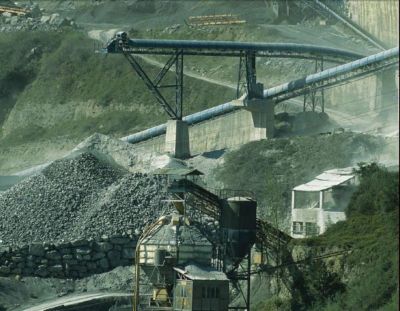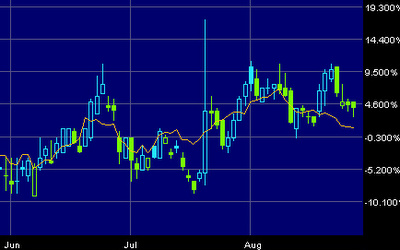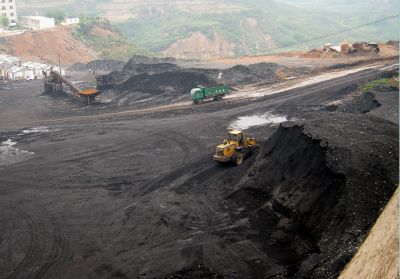
CHINA QINFA Group Ltd (HK: 866) recently issued a Positive Profit Alert saying it expects its first half bottom line to jump by no less than 1,000% on a year-on-year basis.
The purchaser, processer and shipper of coal said it is basing its optimism on a substantial increase in coal handling and trading volume.
Qinfa’s Ms. Wang Jianfei, CEO at the Guangzhou-based firm -- China's largest non-state-owned coal trading and logistics enterprise -- recently spoke to NextInsight during a short breather between an exhausting lineup of roadtrips prior to the company’s first half results announcement on Friday, August 27.
NextInsight: You recently announced expectations of a significant increase in first half net profit based on a substantial increase in coal handling and trading volume attributed to the revival coal-fired electricity demand and a recovery in the global economy compared to the corrresponding period in 2009.
What about the revenue for the period? Will margins improve, stay steady, or decline for the period and why? The Alert cited a "revival in demand for coal-fired electricity"... would this mainly be for household power usage, or industrial usage? Is the stimulus package in China helping boost demand for your companies products and services? Is alternative energy increasingly cutting into your business?
CEO Ms. Wang: Amid the ongoing global economic recovery, domestic demand for fossil fuel power plants, coal handling capacity and transaction volume this year is expected to exhibit substantial growth on a year-on-year basis. In the first half, national thermal power demand recovery mainly fueled by industrial electricity growth was up 24.2%, higher than the rate in other industries and for domestic residential electricity consumption.
Due to incessant government-led investment increases in physical and social security infrastructure, this is resulting in a natural boost in energy demand. The production of building materials including cement and metallurgical products and other energy-intensive commodities will continue to create a surging demand for electricity.
As for potential competition from water, wind, solar and other forms of renewable energy, they are all subject to seasonality, forces majeure and erratic electricity tariffs. Besides, China’s massive coal reserves will still rule the power resource lineup well into the future and will remain the dominant form of energy production.

In May, China Qinfa signed shipbuilding contracts to pay 69 mln usd for construction of two 82,000-DWT bulk carriers. How is this deal progressing, and when do you see it contributing to revenue and by how much?
CEO Ms. Wang: To date, Qinfa has signed four 82,000 DWT Kamsarmax class bulk carrier shipbuilding contracts meant to bolster the modernization of our existing fleet, two vessels of which are already under construction. The newly delivered bulk carriers will greatly enhance our coal-carrying capacity and lower our freight costs.
Post-delivery, the new bulk carriers will greatly enhance our capacity, expand our routes and render our freight costs much more stable. In effect, our global purchasing network will be further expanded.
Coal business remains our core operation, while shipping of coal is just one part of the logistics chain. Coupled with the current fleet, their operations in the near future should be to directly serve the needs of the company and enhancing our own transport capacity.

Therefore, their contribution to group income via leasing to third parties will likely diminish. So if the past few years is any guide, shipping business revenues will continue to only account for a limited portion of our overall business going forward.
Is the Zhuhai Terminal project in Guangdong Province on schedule? When do you predict the total aggregate annual throughput capacity of will reach 20 mln tons?
CEO Ms. Wang: The Zhuhai Terminal project is fully on schedule and construction is on pace. The final project completion date will depend on when throughput capacity reached our intended levels, which will also require all the latest equipment to be in place as well.
Your first half results are due out August 27. What are Qinfa’s expectations?
CEO Ms. Wang: We are extremely satisfied with sales over the period, and have given indications recently that results over the first six months should surprise on the upside.
Although the global economy has recovered from the financial tsunami and the international trade market has stabilized, there are still a number of uncertainties such as the Euro debt crisis as well as macro-economic controls, tightened liquidity and policy transformation in China which may affect domestic demand for electricity and hence demand for thermal coal in the second half of 2010.
However, we will continue to take advantage of the continuous economic growth in China. The directors also believe that the level of domestic production and domestic consumption in China will continue to increase at a steady rate.
These will stimulate the demand for electricity and thermal coal as the principal raw materials for power generation.
How did coal prices/transport rates affect your operations in the first half?
CEO Ms. Wang: In the first half of 2010, coal prices and shipping costs were relatively stable, though some price volatility is normal and is also based on supply and demand shifts resulting from fluctuations.
However, the first half fluctuations were not nearly as drastic as those witnessed in the second half of 2008 and the first half of 2009 because speculation and a ‘gambling mentality’ contributed to a combination of factors that battered the market at the time.
Coal price fluctuations in the first half did not have a negative impact on our company as we were able to effectively hedge by varying our business based on the gap between domestic and international coal prices. And as shipping charges will normally be borne by the final purchaser, fluctuations did not bring many downsides for us.

How do you anticipate coal prices/transport rates might affect your operations in the second half?
CEO Ms. Wang: It is expected that second half domestic and international coal prices will be relatively stable, and Qinfa will more closely base our dealings on the real price differences, adjusting different coal procurement areas proportionally and better managing costs to maximize profits.
The challenge and expected accomplishment also reflects our enhanced coal distribution capabilities, as well as our presence in the international and domestic integrated logistics chain.
Do you have any M&A plans going forward?
CEO Ms. Wang: We are constantly on the lookout to identify attractive companies, both domestic and overseas, that are suitable coal mining and coal infrastructure project and/or investment opportunities, in order to consolidate our existing integrated coal logistics chain.

Why do you think investors should buy your Hong Kong-listed shares?
Investors should be optimistic about our shares for the following reasons:
- The uniqueness of the industry: due to the current market layout, there in not another private enterprise quite like Qinfa competing head-to-head.
- With a current P/E ratio in the single digits based on expected earnings, our share price is significantly undervalued. There is major upside potential.
- There is tremendous potential for future development and prospects for sustainable development: we have in the past made continuous strategic investments such as the Zhuhai Pier, shipbuilding assets, coal, etc, in order to consolidate the existing integrated coal logistics chain. Because China clearly has no shortage of coal reserves, one chronic bottleneck is the transportation aspect of the logistics chain. Therefore, companies that will benefit most are those that can increase delivery capacity in a timely manner as well as delivery quality coal to customers without delays. These are the precise strengths that set Qinfa apart from the competition.
See also: QINFA: Capsizing Competition With Capesize Coal Carriers





